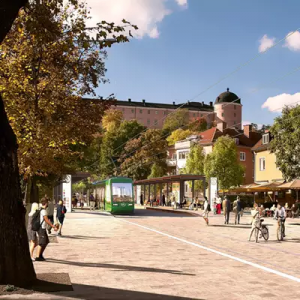 Systra was selected to draft a programme document for the first Uppsala tram line in Sweden, supporting the regional and municipal authorities to deliver the public transport project.
Systra was selected to draft a programme document for the first Uppsala tram line in Sweden, supporting the regional and municipal authorities to deliver the public transport project.
Under the agreement, Systra will be responsible for the design of the project including the solutions for routing, stops, technology choices, depot and vehicles.
“We are very proud to have received this assignment. We are a world-leading player in tramways and our historic references in this field were important factors in our being selected,” Andreas Persson, Business Development Manager, Systra said.
In 2018, the Government of Sweden provided a SEK 900 million (EUR 87.35 million, in current prices) funding for the construction of the first light rail line of the city from Bergsbrunna to Gottsunda. The line would link Bergsbrunna commuter rail station to Uppsala city centre via Fyrisån, Ultuna and Gottsunda districts.
The construction of the tram line was estimated at SEK 4 billion (EUR 390 million, in current prices).
This year, the local authorities decided to continue with the project plan, following a report comparing a BRT corridor versus tramway line. It is expected that a final decision on the construction of the LRT to be adopted in 2021, when the financial resources will be also determined. The implementation of the tramway project in Uppsala requires state co-financing.
The project forms part of a wider plan by the Swedish government to construct 70,000 new homes in Uppsala county and the construction of new stations at Nyala, south of Uppsala, and Bergsbrunna near Knivsta on the railway line between Stockholm and Uppsala.
The tram project aims to bring back light rail services within the city, after the demolition of the first tramway network in 1953.
In 2010, the Uppsala tram line was proposed under a transport master plan to meet future transport demand and the new home district to be developed within the Uppsala area. Forecasts showed an increasing population with an increasing need for new housing and jobs. An extension of the city to the south, west of the Fyrisån (in the southern part of the city) was highlighted as a suitable alternative. In order to meet the need for sustainable and high-capacity public transport, the tramway was selected to be developed to meet traffic demand in the south of Uppsala by 2030.
Share on:



